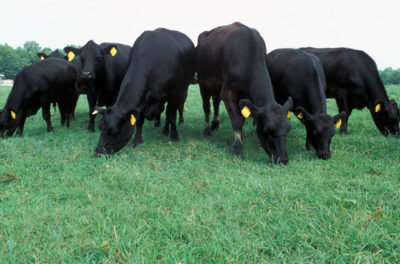

Dr. Andrew Griffith
Assistant Professor
Department of Agricultural and Resource Economics
P: 865-974-7480
There are two cattle inventory reports each year. The “big” one occurs in January while the one that is met with less fan fair is released in July. However, the July 1 cattle inventory report provides tremendous information as it relates to the size of the cow herd and the expected calf crop for the year. This information influences price expectations, and thus, it should influence producer decision making.
The first thing to consider is the number of cows, which effectively places a cap on the expected calf crop for a given year. Not all cows will calve or produce a live calf so it is easy to expect the calf crop to be smaller than the total number of cows. Based on the inventory report, there are 30.35 million beef cows and 9.45 million dairy cows. Dairy steers and crossbreds fit in the total beef production picture so it is necessary to consider that side of the picture. The number of beef cows on July 1, 2022 was the lowest number of beef cows since 2014 while total cow inventory is at its lowest level since 2015.
The second aspect to consider is the quantity of heifers held for beef cow replacement. Heifers held for beef cow replacement totaled 4.15 million head, which is the lowest quantity of heifers held for beef cow replacement on record dating back to 1973. The quantity held as replacements this year was even lower than the 2011 through 2013 drought period when 4.2 million head were retained each year. Dairy heifers held for replacement totaled 3.75 million head, which is the smallest quantity since 2005. One might think dairy producers have an incentive to grow the dairy herd with strong milk prices, but there is little incentive give high input prices.
The third aspect to ponder is the calf crop. The total expected calf crop for 2022 is 34.6 million head. This is the is the smallest expected calf crop since 2015. It is expected that 25.3 million head of that calf crop were born the first six months of the year with 9.3 million expected to be born the second half of the year.
Now that several numbers have been discussed, it would be beneficial to turn them into values by discussing the implications of the situation. Anyone familiar with the cattle industry could have easily determined that cattle inventory was declining given strong cow and heifer slaughter the first six months of the year. Much of that liquidation was due to severe drought, but it was also supported by a strong slaughter cow market as producers were able to market cattle at a strong salvage value. The second factor driving cattle liquidation is high input prices and reduced cash flow. Feed, fuel and fertilizer prices all increased at a more rapid pace than cattle prices, which resulted in many producers being strapped for cash. This then resulted in more animals going to market to maintain a positive cash flow.
What are prices expected to do moving forward? The simple answer from the supply side of the equation is that calf, feeder cattle, and finished cattle prices are all expected to increase as soon as possible. As soon as possible means drought conditions will have to subside and input costs will have to moderate. There are very few people who want to enter a business when costs are extremely high and revenue is middle of the road. Prices will inch higher even if liquidation continues, because the supply of beef will eventually dwindle. However, prices will be on fire as soon as cattle herd expansion begins, because beef supply will be limited by heifer retention and a slow down in cow culling.
From a big picture perspective, producers should be preparing for strong cattle prices moving into 2023 and even higher prices in 2024 and possibly 2025. Preparing means different things for different operations, and preparing for short-term needs is also important. However, animals will have higher values as quantity available declines. There is nothing that says prices will reach 2014 and 2015 levels, but they could certainly come close to it.
